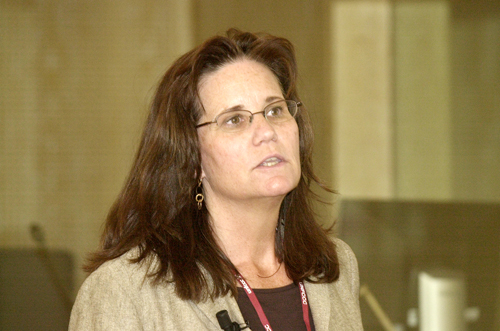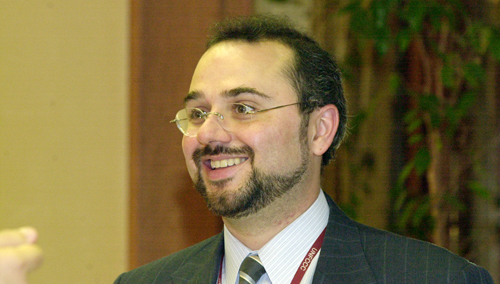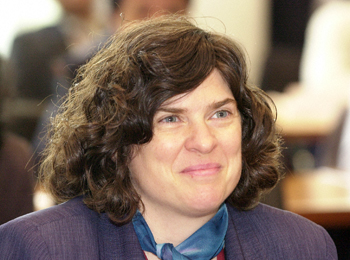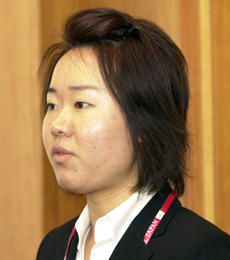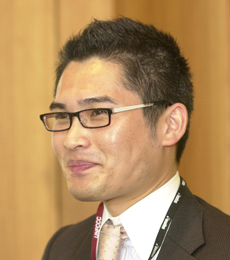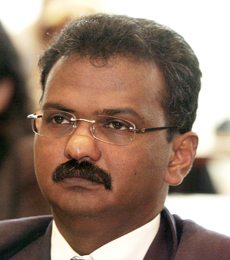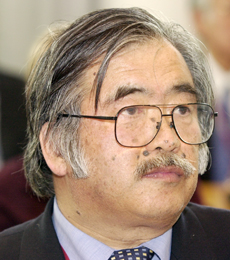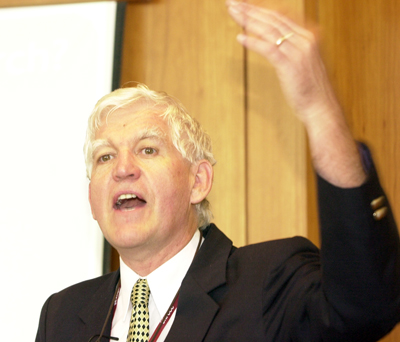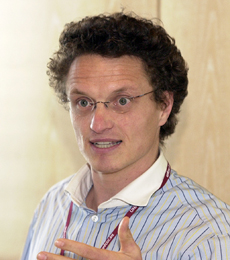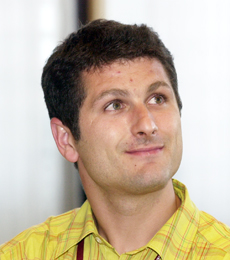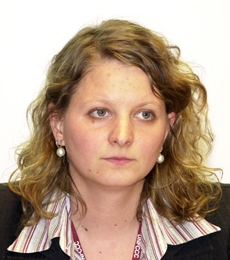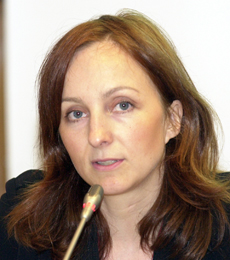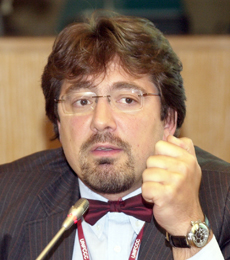 |
||
|
Published by the International Institute for Sustainable Development (IISD)
in cooperation with the UNFCCC Secretariat |
|||
|
Special Report on Selected Side Events at SB 24
|
|||||
| 15-26 May 2006 | Bonn, Germany | |||||
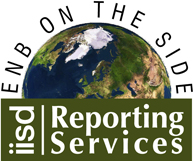 |
|||
 |
|||
Events convened on Tuesday, 23 May 2006
|
Advances in carbon cycle science Presented by the University Corporation for Atmospheric Research |
|||||
|
Kathy Hibbard, National Center for Atmospheric Research, provided an overview of recent developments and future research plans concerning the dynamic carbon cycle. She described the carbon cycle as a “moving target,” and noted how far carbon cycle understanding has developed since Keeling’s curve on atmospheric carbon dioxide concentration, which was first published in 1958. She discussed global patterns in carbon sources and sinks, highlighting the terrestrial and oceanographic changes, as well as regional and local carbon stock fluxes. Concerning the terrestrial changes, she said it is increasingly clear that water stress is an important factor in determining seasonal, regional and annual carbon fluxes. Hibbard explained that a study had shown a significant drying and warming in the US since the 1950’s, which has lead to reduced photosynthesis and slowed terrestrial carbon uptake. Noting that the IPCC’s Third Assessment Report did not take into consideration coupled climate models, which incorporate ocean and terrestrial considerations with atmospheric calculations, Hibbard emphasized that all coupled climate models now simulate a positive feedback of carbon dioxide concurrently with an increase in concentration. She underscored that coupled climate models are still evolving. On changes in the ocean’s carbon cycle, Hibbard said recent models demonstrate that over the past 180 years of carbon measurements, the ocean absorbed 44% of carbon emissions, while over the last 50 years, it absorbed only 36%, suggesting that the ocean is becoming a weaker sink. Hibbard indicated that time series and repeat hydrographic data suggest that the North Atlantic carbon uptake rate has been about half that of the North Pacific over the last decade. She discussed two regional and local carbon stocks and fluxes experiments. She said the Airborne Carbon in the Mountains Experiment examined Colorado’s Front Range and showed that processes and mechanisms in complex terrain differ significantly from those in lowland areas, and that mountainous regions are carbon sinks. Hibbard outlined the advances in observations and modeling and emphasized the leap in understanding of the carbon cycle since the IPCCC Third Assessment Report, hoping that the new knowledge can be used by resource managers and policy makers. Participants discussed: discrepancies between different climate models; whether models take into account organic or inorganic carbon; and the complexities of the terrestrial, atmospheric and ocean carbon cycles. |
|||||
|
|||
|
Annex I GHG inventory reporting - CRF Reporter development update Presented by the UNFCCC Secretariat |
|||
|
James Grabert, UNFCCC Secretariat, explained that the CRF Reporter was created after COP-8 when Parties requested the Secretariat to develop a software for Annex I GHG inventory reporting. He stressed that the software facilitates Party reporting and Secretariat processing, and helps ensure transparent and comparable reporting. He mentioned that a technical workshop was held in March 2006, which provided a clear understanding of user requirements, issues and priorities. He informed that the Secretariat had sent users a questionnaire on the CRF Reporter, which obtained a 60% response rate, and identified poor performance and malfunctioning as key problems. He stressed that over 90% of the respondents indicated that they would use the software in their 2006 reporting and considered the helpdesk useful.
Grabert outlined elements of the development plans, including: developing a stable and reliable version of the CRF Reporter; improving its performance in key areas; enhancing the XML import/export facility; implementing the revised Convention LULUCF sector; and aligning the development activities to Parties’ needs. He indicated that the first release of the third version of the software is scheduled for July 2006 and will include the new XML, more reliable software and some optimized performance. He said the third version of the software will be released a second time in October 2006 and include remaining usability, functions, and optimization work, as well as the revised Convention LULUCF tables. Noting that to date only 32 out of 41 submissions have been received, ten of which are not using the software, he highlighted that the Secretariat aims at achieving a 100% use of the CRF Reporter. He outlined future steps, including: contacting Parties concerning the status of their submissions and interest in resubmission or data migration; coordinating Parties’ desires with the upcoming release of the third version of the CRF Reporter; and implementing support for associated processes. In ensuing discussions, participants addressed the timely deliverance of the new version of the CRF software and the migration of data previously submitted in the Excel format. |
|||
|
|
|||
|
Asia-Pacific initiative towards a sustainable and environmentally-sound society Presented by the National Institute for Environmental Studies |
|||
|
Ryokichi Hirono, Seikei University, Japan, stressed that although climate change is a global issue, it has regional relevance. He outlined various Asia-Pacific initiatives that address climate change and emphasized the need for commitments from national governments and other stakeholders. He said aspects of the Asia-Pacific model may have relevance to other regions.
Makoto Kato, Overseas Environmental Cooperation Center, Japan, introduced the Asia-Pacific Seminars and Network, noting their goal of addressing climate change at the regional and international levels. He stressed that mitigation efforts should be seen as an opportunity for development. Chisa Umemiya, National Institute for Environmental Studies, Japan, introduced the Workshops on GHG Inventories in Asia Region, organized by her government. She explained that these annual workshops assist Asian countries in developing and improving their GHG inventories by promoting regional information exchange. Aree Tummakird, Ministry of Natural Resources and Environment, Thailand, described four common regional issues and possible solutions identified through the workshops. Andrew Matthews, Asia-Pacific Network on Global Change Research, stressed the need to make climate change science understandable to policy makers and to engage policy makers in the climate change debate. Susan Wickwire, US Environmental Protection Agency, underscored the need to institutionalize the co-benefits concepts of climate change mitigation and to build permanent capacity within governmental and technical institutions. Liu Qiang, Energy Research Institute, China, presented baseline and policy and technology carbon dioxide emissions scenarios for China for 2050. He stated that energy savings would contribute most to emission reductions, while technological progress and social and fiscal policies would also contribute significantly. Mozaharul Alam, Bangladesh Center for Advanced Studies, stressed the need to address poverty and climate change simultaneously, and described the contribution that community-based adaptation projects can make in this regard. Taka Hiraishi, Institute for Global Environmental Strategies, emphasized that climate change mitigation and adaptation must be included in national development plans, and invited participants to consider whether the potential co-benefits of CDM projects could be partly funded by ODA or alternative funding sources. Suppiah Muthusamy, Economic Planning Unit, Prime Minister’s Department, Malaysia, explained that regional networks and initiatives on climate change enable continuous exchange between relevant stakeholders and provides a platform for environmental issues that might otherwise not be prioritized. Dadang Hilman, State Ministry of the Environment, Indonesia, explained that the growing understanding of climate change has triggered long-term national planning considerations in his country. |
|||
|
|||
|
Economics of the mitigation potentials in the European agriculture, forestry and land use sector Presented by the European Community |
|||
|
Daniel Deybe, European Commission, introduced the Integrated Sink Enhancement Assessment (INSEA), a multi-faceted project that aims to develop analytical tools to assess economic and environmental effects of enhancing carbon sink and GHG abatement measures on agricultural and forest land.
Erwin Schmid, University of Natural Resources and Applied Life Sciences, Austria, described the bio-physical modeling component of INSEA. He explained the results which show average effects of changes in crop residue systems over ten years in Europe, including increased soil organic carbon and net reduced direct and indirect N2O-N emissions. Michael Obersteiner, International Institute for Applied Systems Analysis, Austria, presented on the forest production and carbon storage potentials of European forestry. He emphasized that there is a potential to substantially increase the harvest in about 20 years and that increasing the harvest rotation time is one way of increasing the carbon storage in forests, although it initially reduces the harvest substantially. Stéphane De Cara, French National Institute for Agricultural Research, described the regional farm-type modeling component of INSEA, explaining that one of its goals is to examine marginal abatement costs in EU agriculture, accounting for regional and farm type heterogeneity. Uwe Schneider, Hamburg University, Germany, described the Forest and Agricultural Sector Optimization model (FASOM) which aims to advise policy makers on environmental, agricultural and trade policies. He stated that FASOM analysis is important for large scale land-use changes. |
|||
|
|||
|
Keeping Kyoto on Track Presented by the International Union of Railways |
|||
|
Margrethe Sagevik, International Union of Railways (UIC), said the ‘Keep Kyoto on Track’ campaign aims to promote a focus on transport, emphasizing that this sector contributes 20% of global GHG emissions. She noted that maritime, aviation, and road transport are the main contributors of all transport emissions and called for a cross-sectoral approach to the development of transport sector policies.
Raimondo Orsini, UIC, emphasized that rail transport and sustainable mobility should be incorporated in the development of climate change policies. He called for a fairer and more balanced Emission Trading Scheme for the transport sector, as well as fuel taxation for aviation. Stephanie Bauer, Deutsche Bahn, highlighted her organization’s energy saving programme, which succeeded in reducing its carbon dioxide emissions by 25% from 1990 levels two years ahead of schedule through capacity utilization, eco-driving, and new technology. She said Deutsche Bahn’s new goal is an additional 15% reduction by 2020 and called for the removal of competitive disadvantages, notably the subsidization of aviation. Participants discussed whether Deutsche Bahn is working with the German government to create incentives for railway use, and the parameters for a shift from road to railway. |
|||
|
|||
|
||
|
Click the above button to go back to our ENB main coverage
|
||
|
|
|
|
|
||
|
